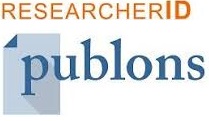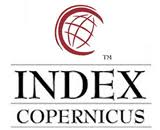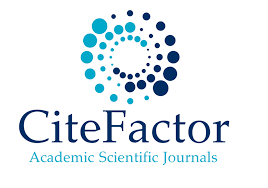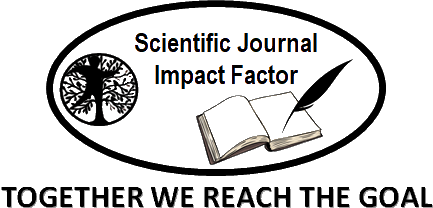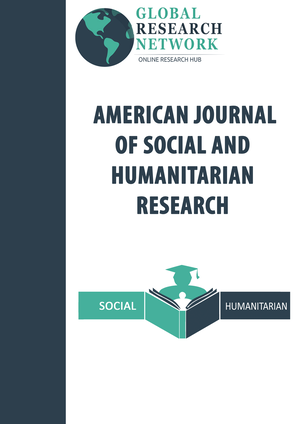Quantitative Analysis of Potassium Concentrations in Hair of Breast Cancer Patients Using Atomic Absorption Spectrometry (AAS)
Abstract
Breast cancer, a leading cause of cancer-related mortality, is associated with genetic mutations influenced by endogenous factors, such as DNA repair errors, and exogenous factors, including environmental pollutants and heavy metals. Potassium, an essential trace element, has emerged as a potential factor in cancer biology, although its role remains underexplored. This study aims to evaluate potassium concentrations in hair samples from breast cancer patients and healthy individuals using Atomic Absorption Spectrometry (AAS), a sensitive and cost-effective technique for trace element analysis. Hair, a non-invasive biological sample, was selected for its ability to reflect long-term exposure to environmental and metabolic changes. Results indicate significantly elevated potassium levels in breast cancer patients (mean: 226.65 ppm) compared to healthy controls (mean: 151.79 ppm), with levels ranging from 30.38 to 725.56 ppm in patients and 42.97 to 403.16 ppm in controls. These findings suggest a potential correlation between potassium accumulation and breast cancer, highlighting its possible role in cancer pathophysiology.
Keywords
Full Text:
PDFReferences
Bray F, Ferlay J, Soerjomataram I, Siegel RL, Torre LA, Jemal A. 2018. Global Cancer Statistics 2018: GLOBOCAN estimates of Incidence and Mortality Worldwide for 36 Cancers in 185 Countries. CA Cancer J Clin, 68:394- 424.
Dwi, S. A. 2017. Body mass index & lama menopause berpengaruh terhadap kualitas hidup menopause. Jurnal Hospital Majapahit. Vol 9(1): 28-41.
Darmono. 2001. Lingkungan Hidup dan Pencemaran (Hubungannya dengan Toksikologi Senyawa Logam), Jakarta: Universitas Indonesia Press.
Enger, Shelly, dkk. 2000. Body Size, Physical Activity and Breast Cancer Hormone Receptor Status. Cancer Epidemiology, Biomarkers & Prevention Jul;9(7):681-7. Vol. 9, 681– 687.
Erdogan, B. 2017. Hair and Scalp Disorder. Intech Open. London
Fardiaz, S. 1995. Polusi Air dan Udara. Yogyakarta: Kanisius.
Florea A M, dkk. 2011. Metals and Breast Cancer: Risk Factors or Healing Agents?. Journal of Toxicology Volume 2011, Article ID 159619, 8 pages. doi:10.1155/2011/159619
Meister K and Morgan J. 2000. Risk Factor for Breast Cancer. American Council on Science and Health. New York.
Gosseau. 2009. Principles of X-Rays. Fluorosence., Vol 1-2. Moscow: Qrium.
Laboratory Purdue Department of Chemistry. 2020. Epsilon 4 X-ray Fluorescence Spectrometer – Basic Data Collection and Analysis of an Unknown Sample using the Omnian Procedur.
Liu L, Chen J, Liu C, Luo Y, Chen J, Fu Y, Xu Y, Wu H, Li X and Wang H (2022) Relationships Between Biological Heavy Metals and Breast Cancer: A Systematic Review and Meta-Analysis. Front. Nutr. 9:838762. doi: 10.3389/fnut.2022.838762
Men Y, et. al. 2019. Evaluation of heavy metals and metabolites in the urine of patients with breast cancer. Oncology Letters 19: 1331-1337. DOI: 10.3892/ol.2019.11206
Niehoff N M, et. al. 2021. Metals and Breast Cancer Risk: A Prospective Study Using Toenail Biomarkers. American Journal of Epidemiology Vol. 190, No. 11. https://doi.org/10.1093/aje/kwab204
Patty, Diana Julaidy. 2011. Analisis Kandungan Unsur pada Sampel Rambut dan Kuku Penderita Kanker Payudara Menggunakan Metode Fluoresensi Sinar X. Tesis. Pascasarjana FMIPA UGM, Yogyakarta.
Putranto, T.T. 2011. Pencemaran logam berat merkuri (Hg) pada air tanah. Jurnal Kesehatan Lingkungan. Vol 32 no. 1.
Romaniuk A, et. al. 2017. Heavy metals effect on breast cancer progression. Journal of Occupational Medicine and Toxicology 12:32. DOI 10.1186/s12995-017-0178-1
Sainsbury, Anderson, et. al. 2000. Breast Cancer. BMJ. Vol 321: 745-751 doi:10.1136/bmj.321.7263.745
Soeroso. 2003. Gen Terkait Kanker Payudara. Medicinal. Vol 4 No. 2 Juli.
Subowo, M.S., Widodo, dan A. Nugraha. 1999. Status dan Penyebaran Pb, Cd, dan Pestisida pada Lahan Sawah Intensifikasi di Pinggir Jalan Raya. Prosiding. Bidang Kimia dan Bioteknologi Tanah, Puslittanak, Bogor.
Sudarmaji, J. Mukono & Corie I.P. 2006. Toksikologi Logam Berat B3 dan dampaknya terhadap kesehatan. Jurnal Kesehatan Lingkungan. Vol 2 no. 2 Januri 42 : 129 -142
Tarhonska K, et. al. 2022. Cadmium and breast cancer – Current state and research gaps in the underlying mechanisms. Toxicology Letters 361 (2022) 29-42
Viklund, A. 2008. Teknik Pemeriksaan Material Menggunakan XRF, XRD, dan. SEM-EDS, Jurnal Sains, ITB, Bandung
Whitaker K D, et. al. 2022. Assessing association of heavy metal levels in urine and sera with neurotoxicity in breast cancer (BC) patients undergoing adjuvant/neoadjuvant chemotherapy. Journal of Clinical Oncology Volume 40 Issue 16. https://doi.org/10.1200/JCO.2022.40.16_suppl.e12510
Romaniuk, А., Lyndin, M., Sikora, V., Lyndina, Y., Romaniuk, S., & Sikora, K. Heavy metals effect on breast cancer progression. Journal of occupational medicine and toxicology (London, England), 12-32 (2017). https://doi.org/10.1186/s12995-017-0178-1.
DOI: http://dx.doi.org/10.52155/ijpsat.v48.1.6804
Refbacks
- There are currently no refbacks.
Copyright (c) 2024 Zahrah Al Jannah

This work is licensed under a Creative Commons Attribution 4.0 International License.








